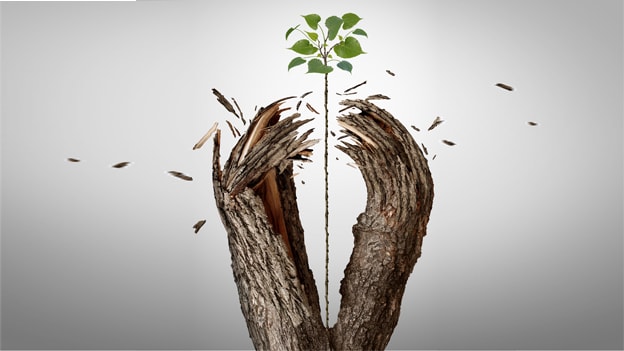Rewards of ‘Resilience’ during times of change

Your CEO just announced a major change in the strategic direction pointing to changes in customer expectations, influence of digital innovations, and competition. As a leader in the organization, this change provides you with a significant challenge.
- How do you communicate this change and lead your constituents with focus and clarity?
- How does your team help you execute this strategy?
- What does the future look like for you and your team?
When you look around at your team, at other leaders and employees, you see a lot of uncertainty, more questions than answers, and people seem stuck.
Addressing change and change management has long been a requirement of the Talent Development function. Unfortunately, most of the tools we have for addressing change are reactive, i.e. how to help people deal with the disruptions of change while or after it is occurring.
Discretionary Energy
During times of change, either positive or negative, the amount of “discretionary energy” employees contribute is their choice. Discretionary energy is the amount of energy an individual uses over and above the minimum needed to keep his or her job and refers to all the various forms of initiative, responsibility, interest, motivation, creativity and dedication individuals control within themselves.1
In making the choice, we have found that employees tend to go in one of three directions. Proactive – fully committed and enrolled. You can see it. Reactive – grudgingly compliant, resisting and maybe even motivated to get even. Again, you can see it! Inactive – pseudo compliant, wait and see, unplugged. Given these three paths, the reality is that most employees move towards ‘inactive’ where the primary use of energy is to remain undetected.
Our experience is that the key to effective organizational change is to ensure leadership is proactive by building the skill of resilience in the workforce. Unfortunately, how to build resilience in people is not well understood.
Resilience
Resilience is often described as durability + sustainability, i.e. the ability to recover from the disruption of change and move forward confidently in a context of opportunity. In fact, resilience is about refocusing your energy towards being relevant given the change.
Building resilience involves three critical steps:
Recognizing how you respond to loss. Change is often perceived as a loss - a loss of status, friendships, identity, authority, etc. Each of us responds to loss differently - what we call the 4-Dises: Disorientation - “Where do I fit in?” Discontent - “Isn’t it awful?” Dis-identification - “I used to be somebody.” Disengagement - “I will just quit and stay.”
To be resilient, one must recognize when one is feeling a loss, for you and for your employees.
Manage your self-talk. The sense of loss is felt deeply within and is driven by what one tell oneself about the loss. Low resilience often occurs when our self-talk spirals downwards into a stronger and stronger sense of loss. Resilience involves the ability to disrupt the self-talk. By altering self-talk, one alters the response to loss, building the ability to sustain energy through changes.
Leading the change process. The problem with most reactive forms of change management is they deal with countering the negatives of change, countering the thoughts people have about whether they or the company will survive the change, or concerns over the losses.
Resilience is less about countering the old negative story and more about creating the new story imbedded in the context of realistic opportunity — refocusing energy for you and your employees.
It is not about what we lost in the change, but what we gain that needs to be told. Building resilient employees may be the best thing an organization can do because when employees are stuck, the organization becomes stuck.
Today, success is less about helping employees “get through” a change process and more about building change resilience so people can adapt to the continuous change surrounding them.
















